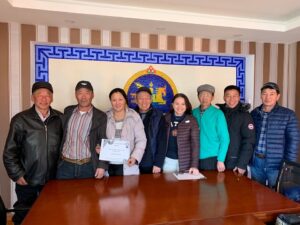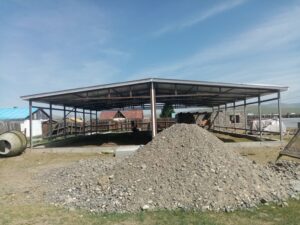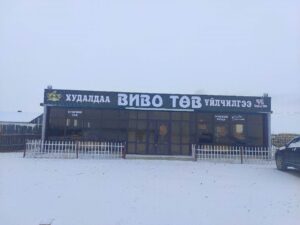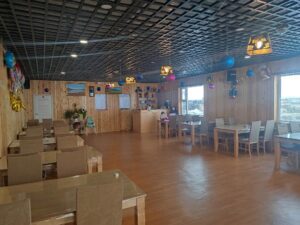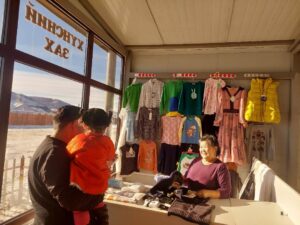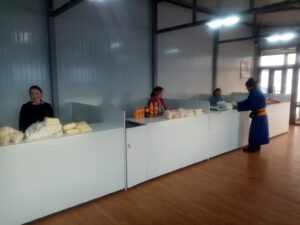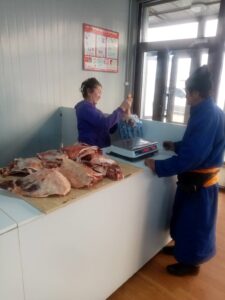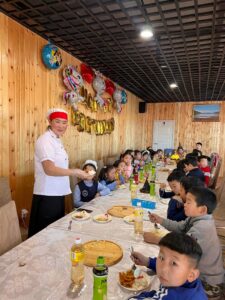Arkhangai aimag, Ikh Tamir soum (forest steppe). Khongor Ovoo heseg.

The heseg territory covers 36,756 ha, of which for the pre 2015 baseline, some 46% (16,908 ha) was covered by forest, with the remainder constituting seasonal pasture and haymaking areas. There are many rare and extremely rare animals and plants in the dense forest spread in the southern part of the region. However, in recent years, due to the increasing number of illegal human activities, such as theft of forests, which are valuable natural resources, the illegal harvesting of rare medicinal plants, nuts, and fruits, and the intentional and accidental setting of forest and field fires, local residents and herders have begun to unite under the goal of proper use of forests and their associated resources. A total of 5 nature conservation societies have been established within the territory of Khongor ovoo PUG (pasture user group)

Khongor ovoo PUG plan of range management
Herdsmen use 188.2 hectares of area around Shireegiin bulan, Khaltariin River, Tsuuraigiin River, Angarhai River, Shar Bay, Ikh Burgast, Onoogiin Am, Orookhoin Ekhen, and Tsorjiin Ditch in winter and spring, and 7252.1 hectares along Tamir River and Ikh Ulunt River in summer and autumn.
Project’s primary goals for Khongor ovoo PUG
1. Increasing soil carbon stocks
• Reducing the number of livestock grazing for extended periods within project intervention areas within the broader project area, for example by introducing seasonal pasture rotations and/or by reductions in livestock numbers over the duration of the project.
2. Biodiversity conservation
• A key aim of nature protection activities is to prevent and reverse reductions in wild species such as gazelle, ibex and deer populations. This can be achieved by activities that directly reduce pressures on these animal species, and those that prevent degradation of or enhance the habitat they require, as well as protecting other key flora.
• Establishing herder partnerships to protect the local environment and encourage increased participation in decision-making on environmental issues, for example issuing licenses for wood cutting, and controlling illegal hunting activities.
• Protecting forest areas from degradation or deforestation for example by preventing illegal timber harvesting, and including protection of saxaul forests;
• Reforestation of degraded forest areas by producing and planting seedlings.
3. Livelihood improvement
The aim of livelihood improvement activities is to increase herders’ income by maximising value from livestock products and developing new sources of income, for example by:
• Increased marketing of milk products – e.g., by forming groups to deliver milk products to local and urban markets;
• Production and sale of wool products – for example felt;
• Gathering and sale of natural resources – for example wild fruit and nuts;
• Production and sale of vegetables.
• Also, as part of the initiative of the herders of Soum, the financing of the project is organized in the form of a mutual fund for the herders’ cash savings, and it is possible for the herders to get a short-term loan from it more easily and quickly, at a lower interest percentage than the bank.
Төслийн зургийн цомог
Ikh Tamir soum’s first plumbered public toilet right beside the “VIVO” center

